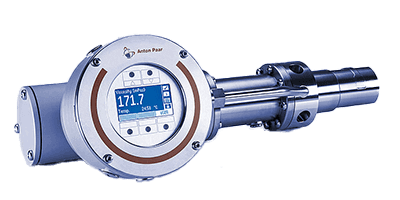What Is an Inline Viscometer?

An inline viscometer is a device that can measure the viscosity of flow in a pipe by placing the measuring section of the viscometer in the pipe or in the wall. Many digital products calculate viscosity in real time and are also used as switches for activating other safety devices, adjusting flow rates, and adjusting the speed of agitation based on the viscosity value.
Many products detect viscosity by continuously vibrating the measuring section at the same amplitude and calculating the resistance value from the amount of change in the vibration.
Inline Viscometers Are Used for Process Control in Chemical and Food Manufacturing
Inline viscometers are used in chemical, plant and food factories. When selecting an inline viscometer, it is necessary to consider the corresponding flow rate and viscosity, measurement accuracy, ease of maintenance, and ease of monitoring output. In addition, since viscosity changes depending on temperature, a product that can simultaneously measure the temperature of the measuring section is suitable if the temperature or other environmental factors change during the plant process.
Examples of inline viscometer applications are shown below.
- Monitoring the degree of mixing during stirring operations in a chemical plant
- Control of food conditions in transport pipes in food factories
- Controlling the condition of paints.
Inline Viscometers Vibrate a Pipe to Determine the Viscosity of Its Contents
The following is an explanation of the principle of operation of the inline viscometer. The inline viscometer consists of a measuring section that is connected to the piping, and an operating and display section that calculates and outputs the viscosity. The measuring section has a housing for connection to the piping, and inside the piping to be measured are a rod-shaped detector and a thermometer. The detector also protrudes into the air outside the piping, and a probe is connected from the detector to send the measured value to the display unit.
During measurement, when a certain magnitude of vibration is applied to the detector protruding into the air outside the piping, the detector inside the piping also vibrates together. The amplitude of the vibration inside the piping varies depending on the viscous resistance of the fluid. The magnitude of the amplitude is detected, and the viscosity is detected by substituting it into the coefficient for calculating the known viscosity. The display section allows monitoring by showing the viscosity and temperature calculated by the vibration.